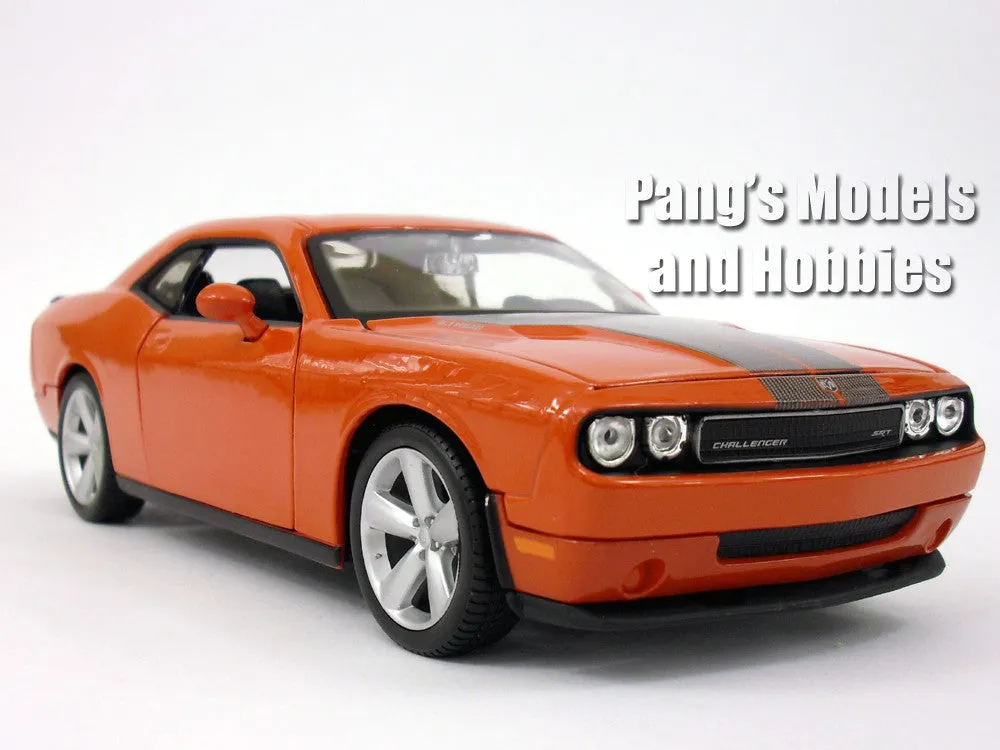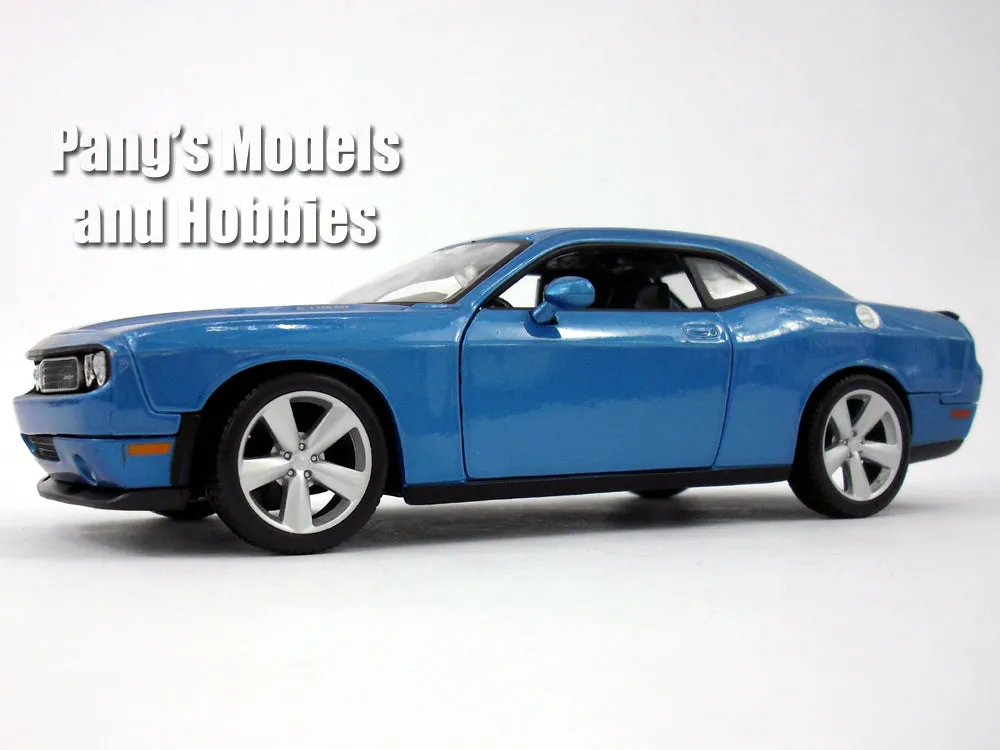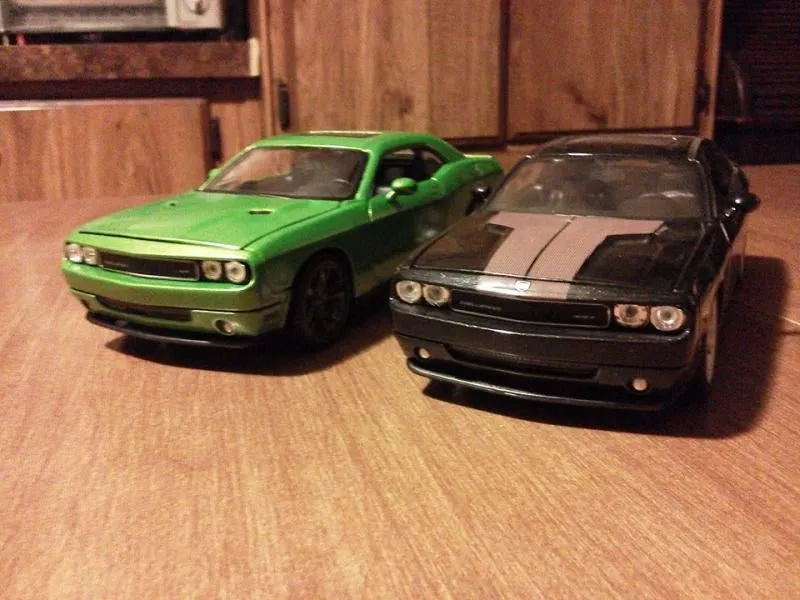Top 5 Facts About Dodge Challenger Diecast Models
The Dodge Challenger, a muscle car icon, has captivated car enthusiasts for decades. Its powerful engines, aggressive styling, and rich history have made it a highly sought-after model. But beyond the full-size vehicles, the Challenger’s allure extends into the world of diecast models. These miniature replicas capture the essence of the original, offering collectors and enthusiasts a tangible piece of automotive history. This article delves into the fascinating world of Dodge Challenger diecast models, unveiling five compelling facts that every collector should know. From the materials used to create these detailed miniatures to where to find them, discover what makes these models so special. Whether you’re a seasoned collector or just starting your journey, prepare to be amazed by the intricate details and enduring appeal of the Dodge Challenger diecast.
The History Behind the Dodge Challenger
Understanding the history of the Dodge Challenger is crucial to appreciating its diecast counterparts. The Challenger’s story is one of evolution and resurgence, with each generation contributing to its legendary status. The car’s origins, the initial models that hit the streets, and the later models are all significant. These vehicles were created with power and performance in mind. The Challenger quickly became a symbol of American muscle, competing with other icons of the era. These early models are especially valuable, their rarity and historical significance increasing their desirability among collectors, as the first generation brought a wave of iconic designs and powerful engines that defined the muscle car era.
The First Generation Challenger

The first generation of the Dodge Challenger, produced from 1970 to 1974, set the standard for what a muscle car could be. Characterized by its long hood, short deck, and aggressive stance, the original Challenger came in various trim levels, offering a range of engine options from the economical inline-six to the fearsome 426 Hemi. These early models are highly coveted by collectors. Finding a pristine diecast model of a first-generation Challenger is a real treasure. The level of detail in these models often reflects the specific features of the original cars, from the iconic grille and headlights to the interior trim and engine bay. Diecast replicas of the first generation are a testament to the vehicle’s legacy and a way to own a piece of automotive history.
The Modern Challenger’s Return
After a hiatus, the Dodge Challenger made a triumphant return in 2008, reintroducing the iconic nameplate to a new generation of enthusiasts. The modern Challenger, while drawing inspiration from its predecessors, offers updated technology, enhanced safety features, and powerful engines. The modern Challenger comes in a wide array of trims, including the SRT models, which are known for their incredible performance capabilities. The modern diecast models of the Challenger are incredibly popular because they capture the sleek, modern design, the aggressive stance, and the powerful engine options, making them a must-have for any collection. These models offer a way to celebrate the modern Challenger’s legacy while appreciating the evolution of this iconic muscle car.
Materials Used in Diecast Models
The quality and durability of a diecast model depend heavily on the materials used in its construction. The primary materials are crucial, and the manufacturing process influences the final product’s detail and appearance. The most common materials are zinc alloy, commonly referred to as Zamak, and various plastics. These materials not only provide structural integrity but also allow for the intricate detailing that makes these models so appealing. Understanding the materials is key to appreciating the craftsmanship and value of each model.
Zinc Alloy

Zinc alloy, often mixed with small amounts of other metals like aluminum, magnesium, and copper, is the standard material for diecast model bodies. The die-casting process allows for the creation of highly detailed parts with precise shapes and dimensions. Zinc alloy provides excellent durability and weight, giving the models a solid feel. The use of zinc alloy ensures that the models can withstand handling and preserve the intricate details of the design. This material allows for excellent paint adhesion, enabling manufacturers to replicate the colors and finishes of the real cars with remarkable accuracy.
Plastic Components
While zinc alloy forms the primary structure, plastic components are used extensively for the other parts. Plastics are employed for elements such as interiors, wheels, tires, and smaller detailing. The choice of plastics allows for greater design flexibility. Different types of plastics are used to achieve different textures and finishes, from the glossy sheen of a dashboard to the matte finish of a tire. The combination of zinc alloy and plastic allows manufacturers to achieve a high level of detail. These components enable the production of intricate features like dashboards, seats, and other interior elements. The use of plastic also reduces the overall cost of production, making diecast models more affordable.
The Scale Factor Explained
The scale of a diecast model refers to the ratio between the model’s size and the actual car’s size. Scales are expressed as ratios, such as 1:18 or 1:64. These ratios are important because they allow collectors to compare models and understand their relative sizes. Different scales offer various options, from models that can be displayed on a shelf to those that are more suitable for detailed examination. The scale factor impacts every aspect, from the overall size to the level of detail. The choice of scale is a significant factor. Different scales cater to different preferences and collector’s needs.
Common Diecast Model Scales

Several scales are commonly used in diecast model production. The 1:18 scale is one of the most popular among serious collectors, as it offers a balance between detail and size. Models in this scale are large enough to showcase intricate details, while not taking up too much space. The 1:24 scale is another frequently used scale, often found in toy stores and hobby shops. It provides a good level of detail at a more compact size. For those who prefer smaller models, the 1:64 scale is a popular option. These models are small enough to be collected in large numbers and are often associated with brands like Hot Wheels and Matchbox. Each scale offers a unique collecting experience.
Benefits of Owning Diecast Models
Collecting Dodge Challenger diecast models offers numerous benefits beyond simply owning miniature cars. These models provide a tangible link to automotive history, preserving the legacy of iconic vehicles. Diecast models can increase in value over time. They serve as an excellent form of investment. Furthermore, collecting diecast models offers a creative outlet. It encourages social interaction and allows you to connect with like-minded enthusiasts. The hobby can offer a deeper appreciation for automotive design and engineering.
Displaying Your Collection
Displaying your Dodge Challenger diecast collection is a satisfying part of the hobby. Displaying the models properly enhances their aesthetic appeal and protects your investment. Consider using display cases, shelves, or shadow boxes to showcase your models. Organize your models by scale, year, or specific Challenger versions to create a visually appealing arrangement. Lighting can significantly enhance the presentation. Experiment with different arrangements to find what works best for you. Proper care and presentation can elevate your collection.
Where to Find Dodge Challenger Diecast

Finding Dodge Challenger diecast models is relatively easy, thanks to the wide availability of these models through various channels. The best place to start is online, where you can browse through a vast selection. Local hobby shops and collector events provide opportunities to find rare models and interact with other enthusiasts.
Online Retailers
Online retailers offer the most convenient access to a wide range of Dodge Challenger diecast models. Major online marketplaces such as eBay and Amazon often have an extensive selection. Specialty diecast model retailers are also available online, offering a curated collection of models. When purchasing online, it is essential to check the seller’s reputation and carefully review the product description. Comparison shopping is key to finding the best deals and ensuring you get exactly what you are looking for. Taking your time and doing your research will help you build a great collection.
Specialty Shops and Collectors’ Events
Specialty shops and collectors’ events provide a more hands-on experience. These shops often carry rare and hard-to-find models. Collectors’ events are a great place to meet other enthusiasts, trade models, and find unique pieces to add to your collection. Attending events allows you to see models in person, assess their quality, and connect with the diecast community. Supporting local hobby shops and participating in collectors’ events is an excellent way to immerse yourself in the world of diecast collecting.
